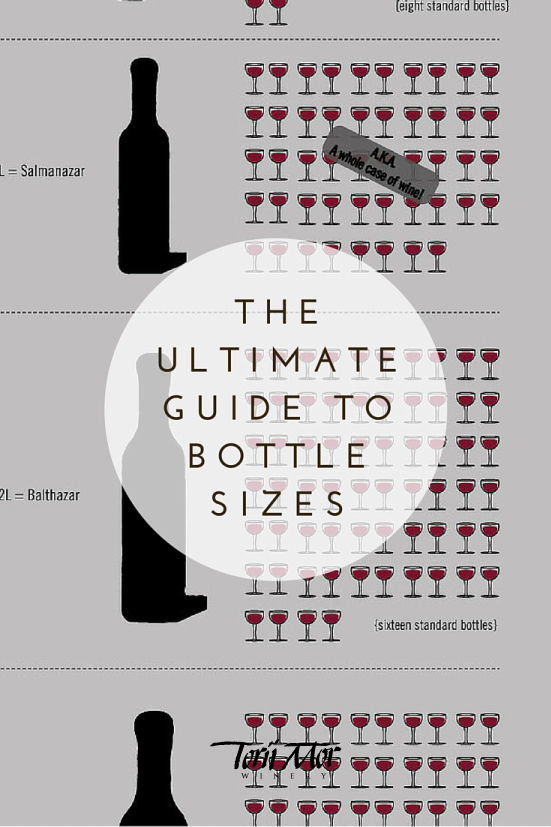The Ultimate Guide to Bottle Sizes

When was the last time you heard someone ask about Nebuchadnezzar in a tasting room? How about Jeroboam? Or Methuselah? Probably never, if you're like most other wine lovers who take home the normal 750ml bottles. But if you've ever wondered about the mysteries of large format bottles, then this is the post for you.
Before we get to the hard-to-say, harder-to-spell names of large formats, let's have a quick history lesson. Large format bottles came about in the mid-1700's. Cork was discovered to act as a sealant, allowing wine to age in the bottle and preventing wine from going bad. Shortly after, larger bottles came in vogue, due mostly to their impressive appearance, but also in part to the fact that they allowed the wine to last longer. Larger bottles could be aged for longer periods of time, and would develop more intricate flavor profiles, than if aged in a standard 750ml bottle.
With few exceptions, the names are all kings of ancient Israel. Maybe as an honor to these esteemed kings or maybe an indication of the value of the wine in a large format bottle, the names indicate the impressive volume each size holds. And there are some pretty interesting back stories too.
For instance, Methuselah lived for almost one thousand years and Nebuchadnezzar is the Babylonian king who possibly commissioned one of the Seven Wonders of the Ancient World, the Hanging Gardens of Babylon. Pretty impressive.
There are also smaller sized bottles, that are hardly ever used. One of particular interest is a 20 oz bottle, called the Winston Churchill. Apparently, that was the exact amount of champagne that Winston Churchill wanted each morning, and thus it was named after him.
But because pictures are worth a thousand words (or 279 glasses in this case!) here's a handy infographic to give you all the details.

Does anyone have a large format of Torii Mor? We'd love to know what you have and love! And if you need to add to your collection, check out our selection here!
Cheers!
Alexis Truitt
Marketing Assistant and Social Media


